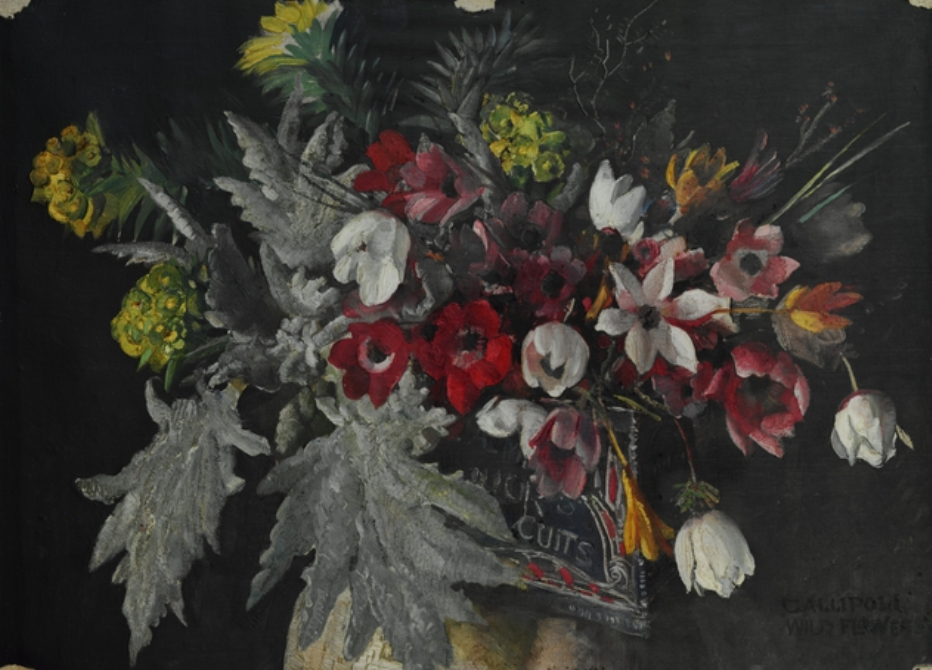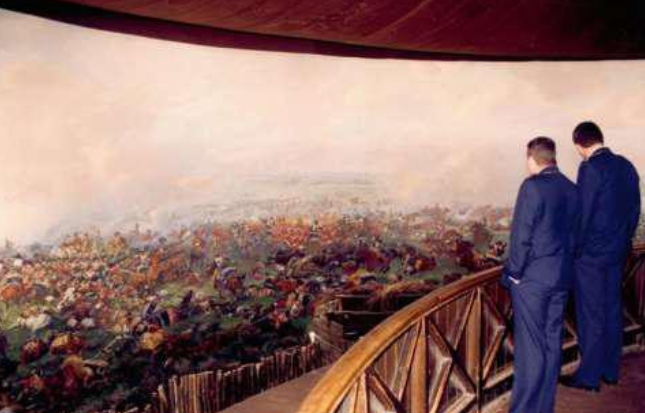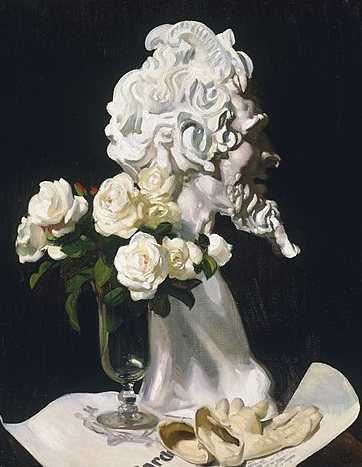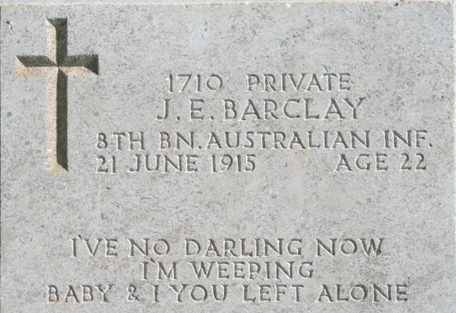
Man shall be halfway between the plant and the specter. — Friedrich Nietzsche
The eight-man contingent that would come to be known as the Australian Historical Mission, including the war correspondent Charles Bean, the artist George Lambert, and the photographer Hubert Wilkins, set out from London in January 1919, traveling first by rail through Paris and Rome to Taranto, and then by sea to Malta and Constantinople, before finally arriving the following month on the shores of the Gallipoli Peninsula.
A little more than three years had passed since the withdrawal from the Dardanelles. Left behind was a landscape scarred by trenches and shell craters, the valleys studded with makeshift graves, the hilltops crowned by heaps of bleached-white bones assembled by local shepherd children. Charles Bean, the leader of the expedition, had himself been an eyewitness to the first landings at Anzac Cove on April 25, 1915, and had produced regular, if heavily-censored, reportorial dispatches describing the progress of the campaign. With a journalist’s eye for detail and a historian’s appetite for rigorous documentation, he related the steady heroism of units like the Third Australian Brigade, comprised of “largely of miners from the Broken Hill and Westralian gold-fields,” and the sangfroid of the disfigured British officer who calmly “went down to the beach, had [his] wound dressed, and returned to his post” after a Turkish bullet carried away part of his jaw, and the splendid nonchalance of the men “diving, splashing, and enjoying sunbaths” off the coast, oblivious to the shrapnel that would “flicker up the water” — which “had not the least effect on the bathers, who might just as easily have been killed ashore.”
Bean returned to Gallipoli as soon as hostilities had ended, bringing with him seven  colleagues to assist with further documenting the battlefield, collecting artifacts for the future Australian War Memorial, interviewing Turkish officers, and laying the groundwork for much-needed permanent cemeteries and other monuments. George Lambert (right), the expedition’s artist, a man described by Bean as possessing “the golden beard, the hat, the cloak, the spurs, the gait, the laugh and the conviviality of a cavalier,” enthusiastically set about sketching the landscape at Plugge’s Plateau and The Nek. “Evidence grins coldly at us non-combatants,” Lambert would later recall, while more dispassionately admitting that purely “from the point of view of the artist-historian The Nek is a wonderful setting to the tragedy.” The result of Lambert’s meticulous preliminary sketches would be Anzac, the Landing 1915 (below), the renowned oil-on-canvas painting that now resides in the Australian War Memorial in Canberra, depicting the advance of Australian troops up treacherous slopes, with Plugge’s Plateau, Walker’s Ridge, and The Sphinx ominously outlined against the horizon.
colleagues to assist with further documenting the battlefield, collecting artifacts for the future Australian War Memorial, interviewing Turkish officers, and laying the groundwork for much-needed permanent cemeteries and other monuments. George Lambert (right), the expedition’s artist, a man described by Bean as possessing “the golden beard, the hat, the cloak, the spurs, the gait, the laugh and the conviviality of a cavalier,” enthusiastically set about sketching the landscape at Plugge’s Plateau and The Nek. “Evidence grins coldly at us non-combatants,” Lambert would later recall, while more dispassionately admitting that purely “from the point of view of the artist-historian The Nek is a wonderful setting to the tragedy.” The result of Lambert’s meticulous preliminary sketches would be Anzac, the Landing 1915 (below), the renowned oil-on-canvas painting that now resides in the Australian War Memorial in Canberra, depicting the advance of Australian troops up treacherous slopes, with Plugge’s Plateau, Walker’s Ridge, and The Sphinx ominously outlined against the horizon.

Lambert’s Anzac, the Landing 1915 would become one of the iconic images of the Gallipoli campaign, praised by the contemporary critic Alexander Colquhoun for having captured the Australian soldiers’ “sacrifice and achievement in a way that no other war picture has done.” The viewing arc of Lambert’s painting is 240°, roughly twice that of the visual field of the typical human eye, giving it a sweeping quality reminiscent of war panoramas and cycloramas like Louis Dumoulin’s Panorama de la Bataille de Waterloo (below), or Jan Styka and Wojciech Kossak’s Racławice Panorama in Wrocław. In some ways, however, the painstaking work of the Australian Historical Mission was better encapsulated by one of Lambert’s more intimate paintings, Gallipoli Wild Flowers. The origins of Lambert’s haunting still life are well-documented. On February 27, Lambert recorded having visited the site of Beachy Bill, a Turkish gun emplacement near the Olive Grove, where he “discovered quite a wild garden to-day and I am fixed for a flower-piece if it rains.” The next day was indeed “cold and bleak with intermittent showers,” but the “forethought of yesterday in gathering flowers and plants saved the situation,” and so the painter spent “a long day at still-life.” By the first of March Lambert could report that his “flower-piece is finished…the work is up to standard.”

Gallipoli Wild Flowers (atop this page) measures a mere 36 x 46 cm, and could at first glance pass for a bog standard still life in the manner of Jacob Vosmaer or Nicholas van Veerendael, but it soon reveals itself as more than a mere genre painting, as evidenced by the improvised vase, a repurposed Australian biscuit tin, perched atop a slouch hat. The various blossoms, each with their own individual character, each surviving in varying states of efflorescence and decay, have their traditional symbolic significance; in the Victorian language of flowers, the rock-rose represents imminent death, the red anemone death and forsaken love, and the yellow broom hardiness and strength. As Ann Elias observed in “War, flowers, and visual culture: the First World War collection of the Australian War Memorial,” these flowers “drape over the tin, [so that] the word ‘biscuits’ is partially covered. The visible suffix phonetically sounds like ‘cuts’ and urges the viewer to again assume another meaning — of picked (or ‘cut’) flowers being like men ‘cut down’ in war. A line from Herbert Read’s A Short Poem for Armistice Day cites: ‘and men like flowers are cut.’”
In his 1911 still life Pan is Dead (below) Lambert achieved a startling, almost surrealistic effect by contrasting a vase full of white roses with a sculpted bust of the curly-haired god Pan, positioned partly in shadow, suggesting, as the art historian and curator Anne Grey has ventured, “both that Pan has lost his liveliness by being cast into a still sculpture, as well as the possible defeat of Pan by both the innocence of the flowers and the rigid social mores of the Edwardian middle class.” Here, in Gallipoli Wild Flowers, Lambert has achieved an even more impressive effect, using nothing more than a bit of battlefield flotsam and jetsam and a hastily-picked bouquet of Turkish wildflowers to give fresh meaning to the macabre French phrase for a still life, nature morte. As an impromptu memorial to the fallen, it can hardly be improved upon.

Flowers have, from time immemorial, been associated with death — “He cometh forth like a flower, and is cut down: he fleeth also as a shadow, and continueth not” — and particular the soldier’s death upon the field of battle, ever since Mars was conceived after Flora plucked a magical blossom, rubbed it against Juno’s stomach, and thereby engendered the future god of war, or at least so Ovid informs us in Book V of his elegiac poem Fasti. It would become a veritable trope — viz. the “finest flower of French chivalry” cut down by English arrows during the Hundred Years’ War, the post-American Civil War Decoration Day ceremonies honoring those who “perished like flowers cut down untimely, in the prime and beauty of young manhood,” and of course the sea of poppies that sprung from the churned-up soil of Flanders, so thoroughly fertilized by dead men and beasts, nitrogen-rich gunpowder, and lime from pulverized farmhouses. Battlefield flowers have been interpreted as a fitting and ever-renewing memorial to the fallen, as the novelist Charlotte Anne Eaton realized when she visited the field of Waterloo on July 15, 1815, first gathering up ashes from the still-burning funeral pyres, and then “as we passed through the wood of Hougoumont, I gathered some seeds of the wild broom, with the intention of planting them at H. Park [her family home at Hendersyde Park, Roxburghshire], and with the hope that I should one day see the broom of Hougoumont blooming on the banks of the Tweed.”
Even today the association persists, as we see in war-shattered Aleppo, where plume thistles, yellow broom, and red poppies have risen out of the ruins of the Old City, prompting the local lawyer and historian Alaa al-Sayed to muse upon how “in Syria we believe that poppies are the blood of the martyrs.” (The poppy anemone, in Arabic, is known as shaqa’iq An-Nu’man, named after the sixth-century Arab ruler Al-Numan bin Al-Mundhir, notable for having been trampled to death by an elephant for refusing to submit to Persian rule.) Another Aleppo resident, Majd Kanaa, has suggested that the riotous blossoming in the Old City represents “God’s message to make everything beautiful after mankind destroyed everything.” In Ukraine, meanwhile, the sunflower, already a symbol of regeneration after being planted on the grounds of Chernobyl in order to draw radioactive cesium from the contaminated soil, has now become a potent emblem of resistance to Russia’s barbaric invasion. It was during the early days of the Russian assault that a Ukrainian woman bravely approached a Russian invader in the occupied city of Henychesk in the Kherson Oblast, telling him to “Take these seeds and put them in your pockets so that at least sunflowers will grow where you fall. Take the seeds. You came to my land. The flowers will grow when you lie down in defeat,” an incident that soon went viral on social media platforms.
Another instance of this figurative trope can be found in the first section of T.S. Eliot’s 1922 modernist poem The Waste Land, “The Burial of the Dead,” which begins with the famous lines informing the reader that
April is the cruellest month, breeding
Lilacs out of the dead land, mixing
Memory and desire, stirring
Dull roots with spring rain.
It is a counterintuitive sentiment, cutting quite against the grain of English literary history — “April with his showres soote,” “well apparell’d April,” “proud-pied April dress’d in all his trim,” and so on. Eliot’s antipathy towards April can be traced back to Gallipoli, where his friend from his days at the Sorbonne, Jean Jules Verdenal, was killed in action. It was actually on May 2, 1915 that Verdenal, a medical doctor, was struck by a Turkish sniper’s bullet while attending to a wounded officer in the Petit Ravin northeast of Sedd ul Bahr. He was buried, according to the French Chief Medical Officer Heitz Boyer, “in an isolated grave in the crevasse of the Petit Ravin, near the Olive Grove,” not far from where George Lambert would one day pick his wildflowers. Vernal’s resting placed was “shaded by a branch of juniper, by a few broom flowers, sheltered under the folds of a small flag.” Eliot dedicated his first volume of poetry Prufrock and Other Observations (1917), to his fallen friend, and looking back on his days in Paris he was “willing to admit that my own retrospect is touched by a sentimental sunset, the memory of a friend coming across the Luxembourg Gardens in the late afternoon, waving a branch of lilac, a friend who was later (so far as I could find out) to be mixed with the mud of Gallipoli.”
As I write this, just beyond the window, the peonies that have emerged from the expanse of ground elder in our garden are beginning to bloom, and I am reminded that the very notion of April, that so-called cruelest month, is something of an artificial construct. In Japan, the seasons were traditionally divided into twenty-four sekki, or divisions, and seventy-two kō, or micro-seasons. It is presently the season of Kokuu (“Grain Rains”), and more specifically, and appropriately enough, the micro-season of Botan hana saku (“Peonies Bloom.”) The flowering plants of the genus Paeonia have long been afforded a profound significance. The Korean-German philosopher Byung-Chul Han, in his 2007 treatise Absence: On the Culture and Philosophy of the Far East, discussed a kabuki actor who “particularly loves peonies because they lose their petals in an instant. It is not only the fully blooming peony, in all its splendour, that is beautiful; what is most beautiful of all is the painful charm of its transience.”
The eighteenth-century Japanese poet Yosa Busan, in his haiku concerning the fearsome Buddhist King of Hell, Lord Enma, portrayed the same flowers in a somewhat different light:
The mouth of Lord Enma
Ready to vomit forth
Red peonies
Another Edo Period haiku master, the lay Buddhist priest Kobayashi Issa, likewise connected the floral and the infernal in memorable fashion:
In this world of ours
Walking on the roof of hell
We gaze at flowers
Perhaps George Lambert felt the same way, as he wandered the battlefield of Gallipoli, gathering anemones and rock-roses and yellow broom and placing them, wilted and rather worse for wear, in an old biscuit tin. Gallipoli Wild Flowers was not Lambert’s only exploration of this theme. He would go on to produce a related poem, “Weed Your Memory,” which urged the reader to
Think more of perfumed flowers and blossoms bright
And lilies hallowed in history,
Nature’s profuse embellishment of vines
In flowery gardens, blossom-laden trees,
If earth is right well dunged the rose is red;
Think not about the bodies underneath,
Forget the dead. Weed out your memory.
We should not take Lambert’s exhortation to “forget the dead” literally. It is hard to imagine that he was simply content to let the dead bury the dead, after all that he, working alongside Charles Bean, Hubert Wilkins, and the other members of the Australian Historical Mission, had done to ensure that the Gallipoli campaign would be meticulously documented, and that the fallen would be properly memorialized. Thanks in part to their efforts, visitors to the Gallipoli Peninsula can pay their respects at thirty-one  cemeteries maintained by the Commonwealth War Graves Commission (formerly the Imperial War Graves Commission). At the Shrapnel Valley Cemetery one can seek out the grave of Melbourne-born Private John Edward Barclay of the 8th Infantry Battalion, who perished on June 21, 1915, and whose poignant epitaph reads “I’ve no darling now/I’m weeping/Baby & I you left
cemeteries maintained by the Commonwealth War Graves Commission (formerly the Imperial War Graves Commission). At the Shrapnel Valley Cemetery one can seek out the grave of Melbourne-born Private John Edward Barclay of the 8th Infantry Battalion, who perished on June 21, 1915, and whose poignant epitaph reads “I’ve no darling now/I’m weeping/Baby & I you left  alone.” (His son, John Michael Barclay, was born to his widow Louisa Mary Barclay at Seddon on October 20, 1915.) In the Walker’s Ridge Cemetery there is the grave marker of Trooper Harold Rush of the 10th Australian Light Horse, killed in the Battle of The Nek, which records his last words: “Goodbye Cobber God Bless You.” The grave of Jean Jules Verdenal may never be found, but his memorial survives in some of the most famous verses of the twentieth century.
alone.” (His son, John Michael Barclay, was born to his widow Louisa Mary Barclay at Seddon on October 20, 1915.) In the Walker’s Ridge Cemetery there is the grave marker of Trooper Harold Rush of the 10th Australian Light Horse, killed in the Battle of The Nek, which records his last words: “Goodbye Cobber God Bless You.” The grave of Jean Jules Verdenal may never be found, but his memorial survives in some of the most famous verses of the twentieth century.
Lambert wanted to forget the dead qua dead, which is to say the smashed and mangled bodies, and the scattered bones piled into mounds or carefully arranged in eery white-concrete ossuaries. Just as Eliot preferred to remember his dear friend “waving a branch of lilac,” Lambert wanted the fallen to be remembered as they were in life, those “lilies hallowed in history.” In the waste land of Gallipoli he found, springing up out of the ground, the perfect symbols of youth and sacrifice, of death and renewal, of the squalor and the glory of war, of the debt owed to nature and the potentialities of civilization.
Lambert’s pointed observation that “if earth is right well dunged the rose is red” was not merely horticultural, something we would do well to remember in our own increasingly parlous times.
 Sign In
Sign In 0 Items (
0 Items ( Search
Search










Thank you for such a complex and tender essay on our need to memorialise, with its enclosed riff on the beauty and language of flowers, a visualisation of the fallen soldiers of all wars, those who died in full bloom. Flowers become the comfort of those who mourn, knowing that as flowers fade, so do we all who are left to recall how it was before fate took its cruel chance. I have enjoyed reading this and reflecting that April is now just passed, where here in Australia it presages winter, when flowers die leaving our vases empty, or quickly put away.. One of my most enduring memories of a vase of flowers is of spring meadow flowers stuck haphazardly in a jam jar on an English cottage casement windowsill in May 2021, when we could at last travel to England after lockdown. April in Australia had led to this northern spring.
Our Anzac Day is autumnal. In Tasmania, it is when you start to light the fires against the creeping cold. Here in Sydney it is just a slight advancing chill, that light finger touch around the shoulders of the season to come. It was interesting to find out that TS Eliot lamented his dead friend in those eternal opening lines. I didn’t know that. Lilacs are my favourite bloom. The scent alone, and each rich hanging bough.
Elegy to the ALH Troopers who died at ‘The Nek’ 7th August 1915
Trooper Rush woke with a yawn,
A touch of grey light beckoned the dawn
The Light Horse were ready that day
Unafraid to enter the fray.
One-fifty men, oh, so brave,
Went o’er the top that became their grave
For Turkish bullets sent them to Hell
All one-fifty were hit and fell.
The next wave saw their mates all die,
But they had a point to prove to you and I,
True Anzac’s, the bravest and the bold
Rose as one, knowing that they too, would not grow old.
The attack plan was bad, a true disgrace,
But Antill said ‘Push On’ to not lose face
When told to go, Rush knew his fate,
He would charge and die with his mate.
The slaughter went on as more men tried
To reach the Turks, but they too all died
Two more waves of our finest men went o’er the top
When finally the order came that called a stop.
Like Leonidas and 300 heroes at Thermopylae
300 True Blue Australian Heroes died that day
The armchair warriors can say what they please,
But I worship the memory of men such as these.
They did what they did for Oz and one another
But these days the selfish would scorn and ask “Why bother”?
Today is about me and what I need
No sacrifice will I make as I have no creed.
That’s not my own way, for the day will arise
When others near and far will see us as their prize
To take our land and make us their slave
That’s when we will need new Anzac’s as brave.
Perhaps these Anzac’s will come to the fore
Like the one’s Australia has produced before
Can our nation remain free to do what we please
If we do not have heroes like men such as these?
These Anzac heroes faced their fate
All for one and each for his mate
Let Leonidas look down and have his say;
‘You died as brave men on that fateful day,
Share with us our honour and let your nation recall
You were true Anzac warriors, one and all.
Go tell the Spartans
Stranger passing by
That here,
Obedient to our law,
We lie.